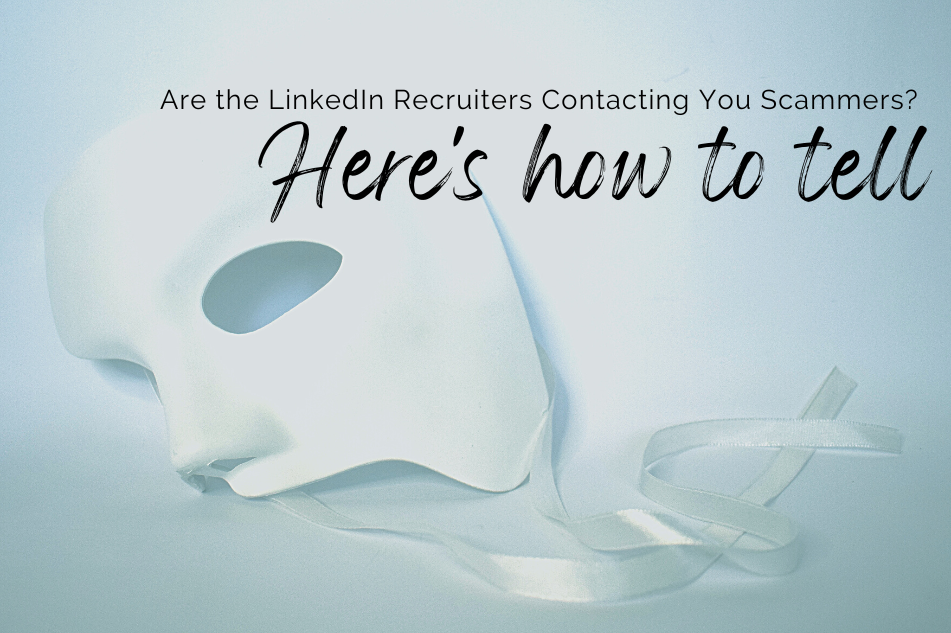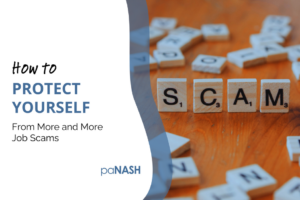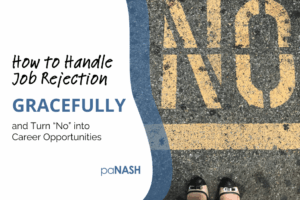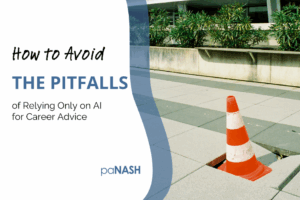|
|
LinkedIn can be a great way to let recruiters and hiring managers know you’re looking for new opportunities. But, marking your profile as “open to work” can sometimes make you vulnerable to scammers posing as recruiters.
This happened recently to a client of mine. Her gut told her the person contacting her wasn’t legit. It’s a good thing she listened to her gut and didn’t respond.
Other than a gut feeling, what are some additional ways to tell if recruiters contacting you are scammers or not? Below is a list of red flags, shared by paNASH’s very own nationally certified LinkedIn Strategist, Dr. Denisha Bonds.
7 ways to tell if you’re dealing with scammers
1. Become the grammar police
When first receiving an unsolicited message from a potential recruiter, Bonds says to,
“Check the message for language fluency, correct grammar and punctuation, and clarity of thoughts.”
I also suggest this when receiving emails directly in your email inbox, and when looking at the company’s web site.
2. Scrutinize the company’s site
In addition to checking the grammar on the company’s web site, consider the content. Is the information vague? And is the same vague information repeated over and over?
Also, check the copyright date to see if it’s up to date with the current year.
Finally, look for staff and team member bios and photos. But, Bonds emphasizes,
“Some scammers pose as real people, so bios and pictures don’t always give a definitive answer.”
3. Search for reviews
Search Google and Glassdoor.com for reviews of the company. If you aren’t finding any, this is a huge red flag!
4. Google the address of the company
Most people will just Google the name of the company, but it’s important to also Google the company’s address. When Bonds Googled the address of the company who contacted my client, she saw that the site is currently vacant and being marketed for sale or lease.
Google maps also help you see not only what the location really looks like, but also what it’s labeled as. I once received a message, and something told me to Google the address listed in the contact information. When I did, the location was listed as a half-way house for ex-convicts!
5. Search LinkedIn
Search the name of the company on LinkedIn. If you can’t find the name of the company there, this is very suspicious and you could be dealing with scammers. Bonds says,
“I mean, would you want to work with a recruiting firm to find a job if they aren’t even on LinkedIn? I think not.”
6. Determine fit
Bonds suggests to compare the company and/or job ad with your own experience and employment history, as outlined on your LinkedIn profile. If there’s not a fit between the company or job and your experience, this is also a red flag.
7. Trust your gut
Finally, Bonds emphasizes the importance of trusting your gut.
“I encourage people to trust their instincts. Sometimes, you just know.”
Do you need help with LinkedIn?
If you would like assistance with optimizing your LinkedIn profile or getting help with your resume, Dr. Bonds can help! She’s not only a nationally certified LinkedIn Strategist, but also a certified professional resume writer.
Click here to complete the paNASH intake form, and indicate your request for an appointment with Dr. Bonds in your comments. We look forward to working with you!





